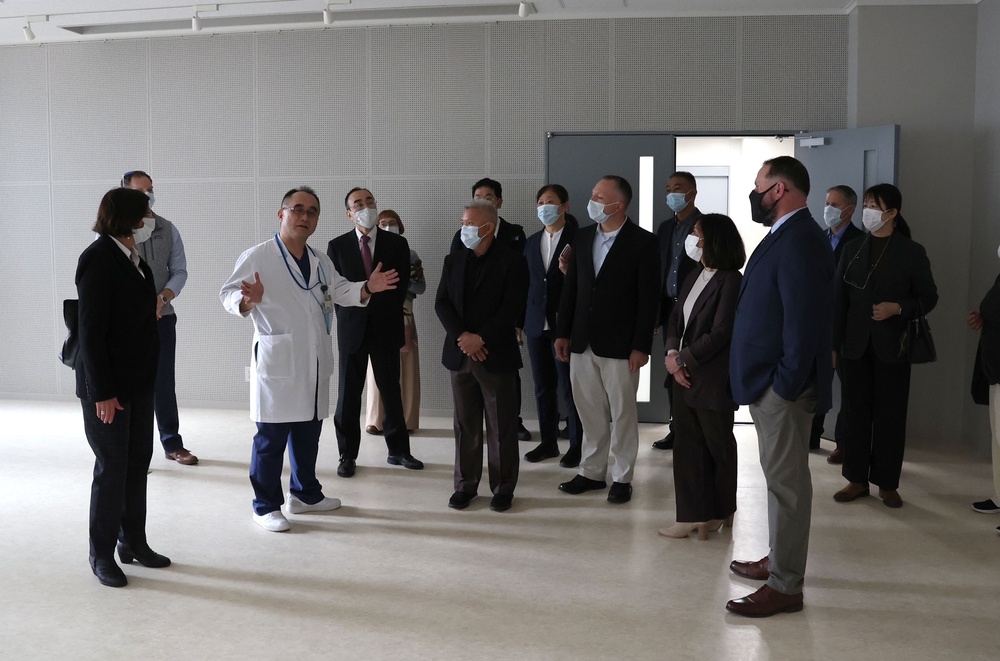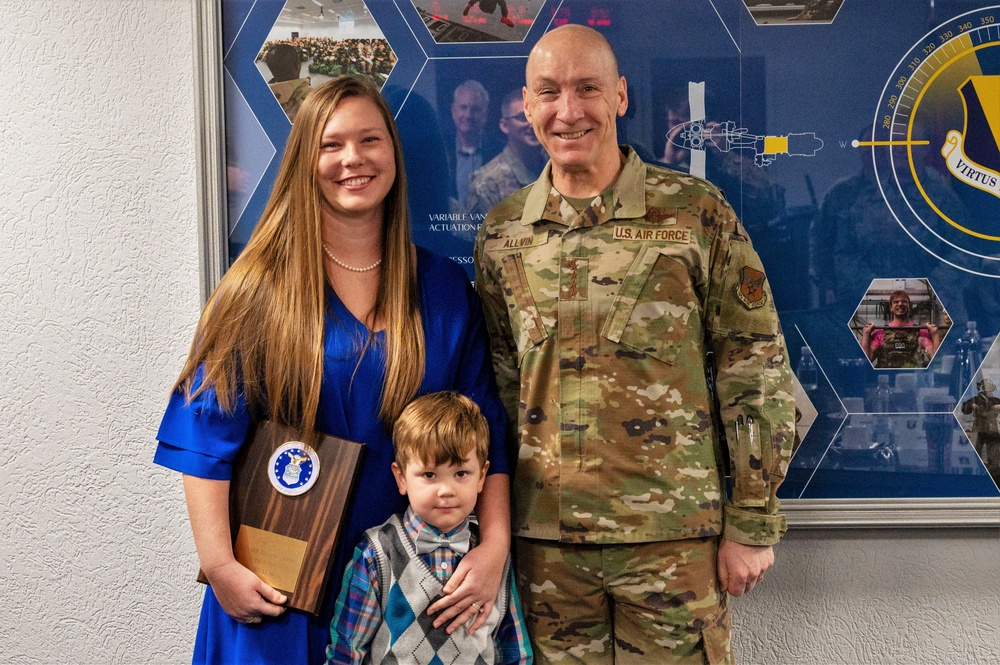DVIDS – News – Cpl. Shay Silversmith’s Mission to Navajo Youth
JOINT BASE LEWIS-MCCHORD, Wash. –
U.S. Army Cpl. Shay Silversmith, of the Navajo Nation (Diné), serves as an Apache helicopter mechanic (15R) assigned to the 16th Combat Aviation Brigade (16th CAB) at Joint Base Lewis-McChord, Washington.
“There were no Navajo helicopters,” Silversmith says. “Apache helicopters were the closest thing.”
Silversmith has always thought it was “cool” that the Army draws inspiration from Native Americans when naming their aircraft. “I’m surprised there aren’t more Native Americans in Army aviation,” he remarks.
However, he points out that Native Americans, more than any other demographic per capita, still make up the highest number of those serving.
Despite what some may think, this is not antithetical, says Silversmith. “We have the most right to fight for this land,” he states.
A Destiny with the Army
At 35, Silversmith left a successful career as a welding instructor to serve.
“I’ve always wanted to join the Army,” Silversmith explains. “I’ve had a lot of influence in my life with the military.”
Silversmith’s grandfather served during World War II, his uncle and father in Vietnam, and his brother retired from the Air Force after 20 years of service.
Silversmith also graduated from Wingate, a Navajo military boarding school.
“I loved it,” Silversmith says. “They do the whole- fix your bed, military style- and morning formations. I got to basic training and I was like, this is easy.”
Silversmith was born in Gallup, New Mexico. He spent his early years in the city with his mother, but visited his father and grandparents on the Navajo reservation.
“They’d always take me to my grandparents’ house, where I’d be riding horses or herding sheep—just being a good old ‘res kid’ without a care in the world.”
The visits brought joy and cultural connection to Silversmith, who was born into the Ma’ii Deeshgiizhnii (Coyote Pass Clan), Táchii’nii (Red Running Into the Water People Clan), Tó’aheedlíinii (The Water Flows Together Clan), and Honágháahnii (One Who Walks Around Clan).
Even on the reservation, however, the outside world called to Silversmith with a thunderous boom- during his time at Wingate, the Army was “right in our backyard,” Silversmith recalls, launching missiles at White Sands range. The missiles entertained Silversmith and his friends.
“I was just like, holy cow, that’s freaking cool!” he recalls. “We would always watch it come up, and you could just see, like, a big plume of rocket smoke going up in the air.”
Family
Silversmith has found a family in his fellow Soldiers, and he appreciates the different perspectives they bring to his life.
“The United States has the biggest diversity throughout the world and I definitely enjoy that,” says Silversmith. “I learn a lot from the people I work with. I joke around with everybody. There’s always that good, fun camaraderie, and it makes you want to come to work.”
Army life is not without obstacles, of course. It can be a challenge for Silversmith to stay connected to his community, but he reaches out to fellow Native Americans when he encounters them, and follows their accomplishments in community newsletters.
“I definitely enjoy seeing other Native Americans achieve what they want to achieve in the military,” Silversmith says.
Despite being far from home, Silversmith stays connected to his culture, considering himself “a traditional Navajo man.”
He and his wife, also Navajo, recently celebrated their daughter’s first laugh with the Navajo “first laugh” ceremony, which welcomes new laughter into the world.
The family also participates in the annual “first snow” ritual, in which participants take an icy plunge to strengthen body and spirit.
“We did it with my kids, even when they were just a few months old,” Silversmith says. “It’s about toughening up mentally and physically,”
He adds with amusement that his son now looks forward to the first snow every year, and that “he is scared to death” but “so excited” to jump in. “So it’s fun,” says Silversmith. “I definitely enjoy those times.”
Hope for the Next Generation
Though Silversmith cherishes the cultural richness of the Navajo reservation, he is candid about difficulties the residents face.
“When I went to Iraq, I found a lot of similarities to the Navajo Nation,” Silversmith says. “A lot of people don’t have plumbing, running water, or electricity…The Colorado River borders the Navajo reservation, but we don’t have access to it.”
Silversmith explains that these hardships instill a fear of the unknown, making many Native Americans afraid to leave the reservation. “So they kind of linger,” he says, “and unfortunately, I believe that’s not the way to live.”
Silversmith plans to become a recruiter or instructor to show Native Americans what the Army has to offer.
“The Army is definitely a resource to take advantage of, even if it’s just for three years,” he says. “Networking, getting out there, getting new ideas of what’s possible. And in return, [you can] take that knowledge back to the people, and it becomes a cycle that gets more people out of the reservation. That gets more people out there to try something new.”
This vision is about more than individual success—it’s about collective empowerment for the Navajo community.
“You have to share [your knowledge] with your friends and your family back home,” Silversmith says, “regardless of whatever reservation they come from, because knowledge is key. We are strong people. We are very honorable, and we do want to bring that honor back to ourselves.”
-30-
| Date Taken: | 11.25.2024 |
| Date Posted: | 12.01.2024 16:53 |
| Story ID: | 486364 |
| Location: | JOINT BASE LEWIS-MCCHORD, WASHINGTON, US |
| Web Views: | 8 |
| Downloads: | 0 |
PUBLIC DOMAIN
This work, Cpl. Shay Silversmith’s Mission to Navajo Youth, by SGT Elizabeth DeGroot, identified by DVIDS, must comply with the restrictions shown on https://www.dvidshub.net/about/copyright.


 Private Internet Access gives you unparalleled access to thousands
of next-gen servers in over 83 countries and each US state. Your
VPN experience will always be fast, smooth, and reliable.
Private Internet Access gives you unparalleled access to thousands
of next-gen servers in over 83 countries and each US state. Your
VPN experience will always be fast, smooth, and reliable.

